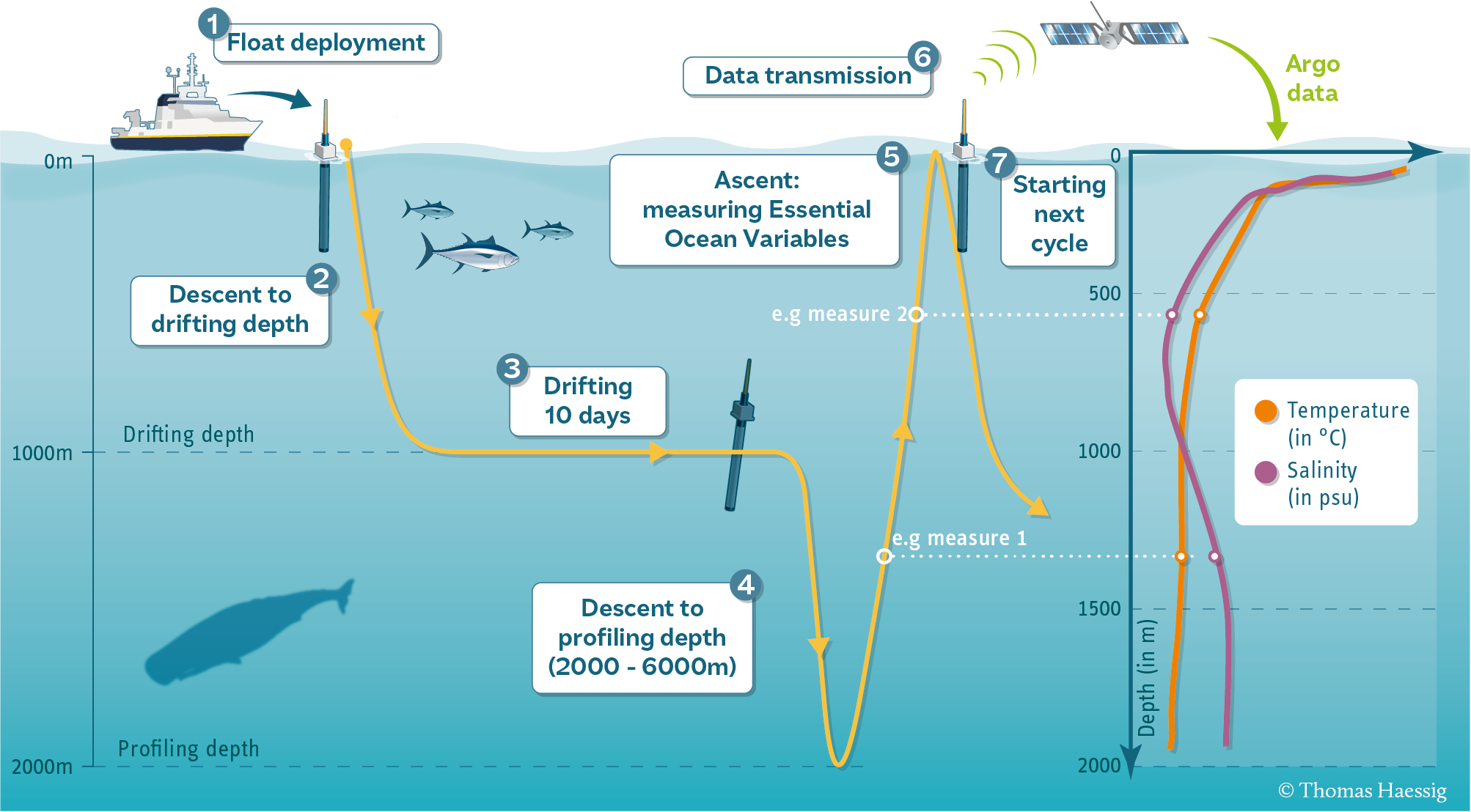Describe Two Tools Scientists Use to Collect Data About Oceans
Is scraped along the ocean floor to collect seafloor creatures such as oysters clams sea cucumbers. A long net seine or dragnet attached to two poles used in.
And the interactions of the atmosphere and the ocean.

. -- side -scan sonar- directs sound waves to the sea floor at a angle so that the sides of underwater hills an other topographic features can be mapped. There are three tools used to map the ocean floor sonar satellites and submersibles. The material that settles to the bottom of a body of water.
MOORINGS Instruments can be moored in the ocean for months or years to collect samples or data. Taking Measurements of the Marine Environment. Organisms such as diatoms forams and coral can serve as useful climate proxies.
Sonar is also known as echo sounding. A tool that scientist use - has a pan on either side used to measure the amount of matter in in an object - the weight. It destroys the ocean floor.
Recognize several of the common sensors and platforms used to collect oceanographic data. Draw conclusions In one OMG study scientists discovered that many Greenland. Locate OOI arrays on a world map by latitudelongitude and ocean basin name.
This is also the case with several other types of samplers bottom organism. Satellites are amazing tools for observing the Earth and the big blue ocean that covers more than 70 percent of our planet. Reversing Thermometer for Nansen Bottle Bathythermograph BT 2.
A branch of oceanography called geological oceanography focuses on the formation of the seafloor and how it changes over time. Other proxies include ice cores tree rings and sediment cores. Lab 1 The collection of oceanographic data Learning outcomes.
Determine latitude and longitude for locations. The transport of sand on and off beaches. One of the basic tools used to study the ocean is nets.
The tools used by marine scientists to make observations about oceans and marine organisms are Remote Operated vehicle ROV Automated untethered Vehicle AUVs Global positioning system GPS and Human-occupied vehicle HOV. --sumbersibles- underwater vessles that can remotely operate andcary peopleto the deepest parts of the oceans. As scientists have developed ways to make inferences from satellite data about the state of the ocean at depth they can now use satellites to make a wide range of observations.
Geological oceanographers are starting to use special GPS technology to map the seafloor and other underwater features. After completing this lab students will be able to. Chemical proxy records.
Today buoys and water column samplers are used to monitor sea surface conditions and water quality factors coring devices collect sediment samples sonar helps create maps of the seafloor and remotely operated vehicles ROVs allow us to. Equipment that collects information about Earth from outer space. Most of the water samplers can be sent to a particular depth and then triggered to take the water sample by a messenger.
Among the many missions of this satellite it will collect ocean and climate data. When scientists focus on climate from before the past 100-150 years they use records from physical chemical and biological materials preserved within the geologic record. In its two hour trip the radiosonde floats to the upper stratosphere where it collects and sends back data every second about air pressure temperature relative humidity wind speed and wind direction.
During severe weather we usually launch weather balloons more frequently to collect additional data about the storm environment. Sonar is a type of electronic depth-sounding equiptment made in the 1920sIt is an acronym for sound navigation and ranging. Tools of Oceanography Ocean Currents.
Of course oceanography covers more than the living organisms in the sea. As the OMG crew and scientists collect data around 27000 miles over 43000 kilometers of Greenland coastline over that five-year period each year scientists will analyze the data to see how much the oceans warmed or cooled and how the ice changed in response. Using satellites such as TOPEXPoseidon and Jason-1 scientists can measure the sea surface height SSH and use the information to study surface current ocean circulation and heat stored in the oceans coastal tides and ocean floor topography.
One net can be used to collect ocean life such as plants and animals. These satellites use a radar altimeter that sends short pulses of electromagnetic radiation downward and analyzes the returned. If it is small enough it can be used to gather material from the surface or if a scientist would need several nets at the same time there are frames that can manipulate them while laboratories on the ship can study information that they gather.
By remotely sensing from their. Describe two tools scientist use to collect data about oceans. Physical oceanographers study the physical conditions and physical processes within the ocean such as waves currents eddies gyres and tides.
A tool used by scientists - a box that holds things that are hard to hold such as a bug - has a magnifying lid. Taking Samples of the Marine Environment. These can include tracking ocean waves analyzing currents and eddies monitoring changes in sea level or global ocean carbon or determining biological phytoplankton production.
A growth ring of a tree. Up to 24 cash back Todays technology lets scientists to study the ocean in a quicker and precise way. Drifting sediment traps are used to study surface layer sedimentation and such instruments as an acoustic backscattering device for collecting long-term data on plankton distribution are mounted on drifting buoys.
Scientist use this tool to make things look bigger. They examine deep currents the ocean-atmosphere relationship that influences weather and. A sample taken from the bottom of the ocean or a lake that helps scientists study past climates.
The Geostationary Operational Environmental Satellite-16 GOES-16 is the first of NOAAs next generation of geostationary weather satellites.




No comments for "Describe Two Tools Scientists Use to Collect Data About Oceans"
Post a Comment